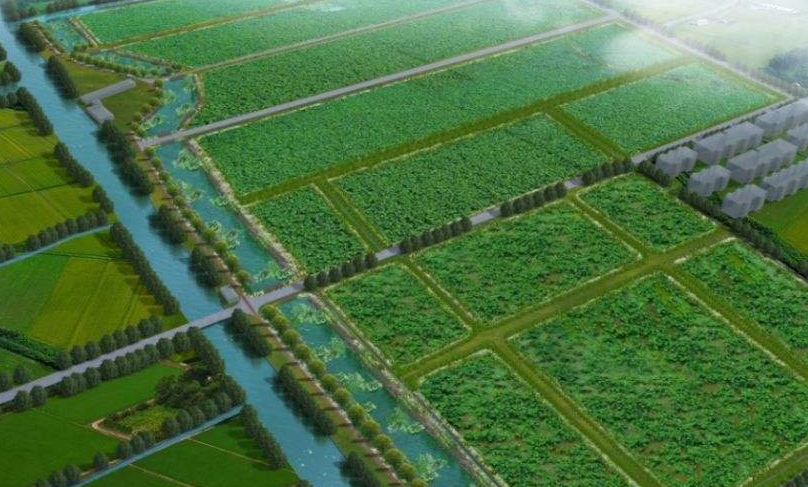NY/T 3824 - 2020The Technical Specification for Monitoring Agricultural Surface Pollution in Watersheds is an industry standard approved and issued by the Ministry of Agriculture and Rural Affairs of China to guide the monitoring of agricultural surface pollution in watersheds.Indicators for monitoring the water quality of agricultural surface pollution sections in watersheds include chemical oxygen demand (COD), ammonia nitrogen (NH3-N), total phosphorus (TP), etc.; the standards relate to the preparation of the monitoring, the layout of the sections, and the monitoring indicators.The following are the main indicators and criteria for water quality monitoring of agricultural surface pollution sections in river basins according to NY/T 3824 - 2020:

Flow: Used to calculate pollutant loads and understand how pollutants vary with water volume.
pH: A measure of the acidity or alkalinity of a body of water, with a standard range of 6.5 to 8.5 (Class I to III water).
Dissolved Oxygen (DO): essential for maintaining aquatic ecosystems, the standard for Class I-III water is ≥7 mg/L, Class IV water ≥5 mg/L, and Class V water ≥3 mg/L.
Ammonia Nitrogen (NH₃-N): Excessive amounts can lead to eutrophication of water bodies, with standards ranging from ≤0.15 mg/L for Type I water to >2.0 mg/L for Inferior Type V water.
Permanganate index (a kind of chemical oxygen demand): assess the content of organic pollutants, Ⅰ ~ Ⅲ water ≤ 4 mg / L, Ⅳ water ≤ 10 mg / L, Ⅴ water ≤ 15 mg / L.
Total phosphorus (TP): related to eutrophication of water bodies, the standard ranges from Class I water ≤ 0.02 mg/L to Class V water > 0.4 mg/L.
Total Nitrogen (TN): Includes various forms of nitrogen compounds, with standards ranging from ≤0.2 mg/L for Type I water to >2.0 mg/L for Class V water.
Turbidity: reflecting the amount of suspended particulate matter in water, the standard ranges from Class I water ≤ 10 NTU to Class V water ≤ 100 NTU.
Environmental Quality Standards for Surface Waters (GB 3838-2002): As a basis for water quality evaluation, detailed limits for water quality indicators are provided, which are applicable to surface waters in different functional areas.
The "9+X" model:That is, nine basic monitoring indicators plus a number of characteristic monitoring indicators, where "X" is dynamically adjusted based on historical data and current water quality conditions in a specific river basin.
Preparation for monitoring: Preparation for monitoring includes the development of a detailed monitoring plan that specifies the purpose, scope, periodicity and methodology of the monitoring.At the same time, it is necessary to ensure that the monitoring personnel have appropriate professional skills and qualifications.
Monitoring indicators: The selection of monitoring indicators should be based on the pollution characteristics of the watershed and the purpose of monitoring.In addition to the conventional indicators mentioned above, other specific indicators may be added as required.
Monitoring methods: The selection of monitoring methods shall be in accordance with the requirements of relevant standards and technical specifications.Commonly used monitoring methods include on-site sampling and laboratory analysis.
Monitoring Periodicity and Frequency: The determination of monitoring periodicity and frequency should be based on the actual conditions and monitoring needs of the watershed.In general, the frequency and density of monitoring should be increased for priority watersheds or heavily polluted areas.
Erun environmental protection production of desktop multi-parameter water quality analysis tester ERUN-ST7 can detect PH, conductivity, dissolved oxygen and water temperature and other parameters, the user can also according to the need for free combination of custom testing parameters.Widely used in the area of agricultural surface pollution cross-section water quality monitoring.

Therefore, the indicators for water quality monitoring of agricultural surface pollution sections in the watershed mainly include nitrogen content, phosphorus content, pH and conductivity, etc., and the standard is based on the Technical Specification for Monitoring Agricultural Surface Pollution in Watersheds (NY/T 3824 - 2020).In implementing the monitoring process, measures such as strengthening the construction of monitoring stations, increasing the frequency of monitoring, enhancing data analysis and promoting information sharing should be taken to ensure the effectiveness and accuracy of monitoring.